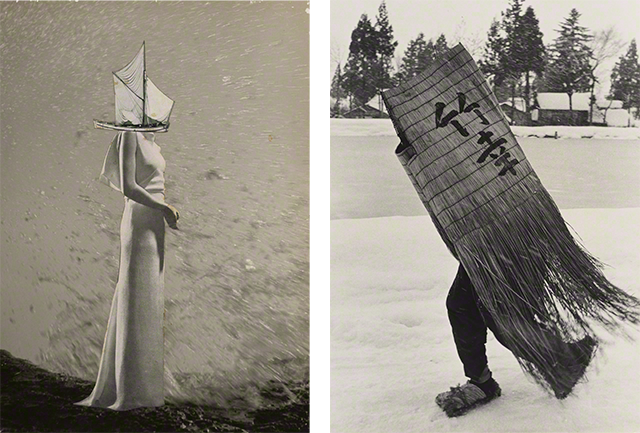Japan's Modern Divide:
The Photographs of Hiroshi Hamaya and Kansuke Yamamoto
This exhibition presents the work of two 20th-century photographers, Hiroshi Hamaya and Kansuke Yamamoto, who represent important but alternate paths in Japanese photography.

Throughout his career Hiroshi Hamaya pursued objective documentation, while Kansuke Yamamoto favored avant-garde forms of expression. These photographers embody two sides of modern Japanese life: the traditional and the forward looking, the rural and the urban, the Eastern and the Western.
Both artists grew up during the brief Taishō era (1912–1926), a period of industrialization and experimentation that ushered in the modern Shōwa era (1926–1989). It was during this time, between the international Depression and World War II, that Hamaya began to document regional traditions and social issues, primarily on the country's rugged "back coast" along the Sea of Japan. In contrast, Yamamoto found inspiration in Surrealist art from Europe and produced innovative, socially conscious photographs, poems, and other works that advanced the avant-garde movement in Japan.
As the prosperous postwar period brought a time of intense modernization, Hamaya maintained his interest in realism, but turned his attention to Japan's natural environment. Yamamoto continued to pursue avant-garde forms of expression, evoking provocative ideas without the threat of censorship that prevailed in the 1930s and 1940s. Their responses to modernity exemplified the divergent views of many Japanese people.
Publication
Japan's Modern Divide: The Photographs of Hiroshi Hamaya and Kansuke Yamamoto
Edited by Judith Keller and Amanda Maddox
Edited by Judith Keller and Amanda Maddox



